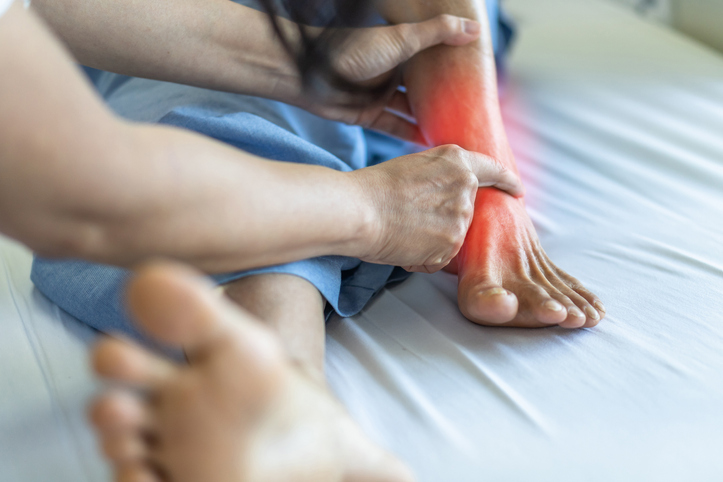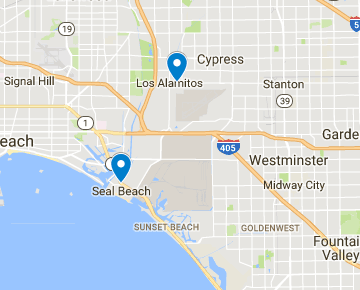What to Know About Osteoarthritis of the Feet and Ankles

Osteoarthritis doesn’t only strike your hips and knees. It can happen in your feet and ankles, too.
Osteoarthritis can affect any joint in the body, and that includes your feet and ankles. Every joint in your body is made up of two bones connected by ligaments and tendons. That’s what gives the joint its mobility. But the most important part of a joint is the cartilage cushioning the bones when they move. When the cartilage wears away, the bones rub against each other and painful osteoarthritis develops.
Your foot consists of 28 bones and more than 30 joints, making it especially vulnerable to osteoarthritis. Osteoarthritis typically affects the big toe, the joint joining the ankle and the shinbone, and three joints of the heel bone, the inner mid-foot bone, and the outer mid-foot bone. Osteoarthritis is a chronic condition, but it can be treated and managed.
What does foot and ankle osteoarthritis feel like?
Without the protective barrier of cartilage, you’ll experience pain, stiffness, and swelling in the joint as the bones grind together. You may feel pain most acutely when walking. Sometimes, spurs develop along the bones and distort the shape of the joint. If those spurs break off, they can cause pain in the joint, as well.
The degeneration of cartilage occurs most often due to aging. Simply put, as we age, our cartilage naturally wears away. But an injury to the foot or ankle can also speed up the degeneration process. Being overweight can further strain the joints, leading to osteoarthritis. Some people could also have a genetic predisposition to the condition.
Flat feet and high arches can increase the risk of osteoarthritis. Flat feet cause the ligaments in the foot to be less stable, which strains the joint. Conversely, a foot with a high arch is less mobile, and a rigid joint heightens the chance of osteoarthritis.
In addition to the pain and swelling, osteoarthritis may force the bones in your big toe to fuse together. The medical term for this condition is hallux rigidus, and it can feel extremely painful to walk. Hallux rigidus can also lead to bunions forming on the side of your big toe. Other possible complications include calluses and corns on the foot.
Managing foot and ankle osteoarthritis
To diagnose osteoarthritis, your doctor will examine your feet and ankles and review your walking stride. X-rays may also be ordered.
Conservative methods are usually the first line of osteoarthritis treatment, which will include one or more these therapies:
Pain medication. Over-the-counter nonsteroidal anti-inflammatory medications are helpful in alleviating pain and swelling. A steroid injection directly into the joint can reduce inflammation but relieve pain for only a few months.
Orthotic devices. Orthotic devices, such as shoe inserts, support the foot while also providing a layer of cushioning to make walking more comfortable.
Braces and boots. Bracing or taping around the ankle supports the joint and makes walking less painful. An ankle boot or cast immobilizes the joint and protects it against further inflammation.
Physical therapy. Exercising with a painful foot is admittedly difficult. But a physical therapist can show you exercises to strengthen and stretch the muscle around the joint to increase mobility.
Surgery. If conservative methods fail to work, surgery may be your next option. A surgeon can perform arthroscopic surgery to clear out bone spurs or other floating objects in the joint. This surgery works successfully in the early stages of osteoarthritis. Another type of surgery fuses the bones together in the foot, ankle, or toe, and holds them in place with rods, pins, screws, and plates. Note that fusion surgery, or arthrodesis, may affect how you walk. Joint replacement may be done in very rare cases.
To keep your ankle and foot joints functioning and healthy, wear shoes with thick, cushioned soles to absorb the stress on the joints as you pound the pavement. Anytime you’re experiencing problems with your feet, such as bunions and calluses, visit a podiatrist for treatment.
Does your foot ache?
A painful foot can limit your ability to walk and do everyday tasks. At Alamitos-Seal Beach Podiatry, our practice focuses solely on foot and ankle disorders. We will diagnose and treat your conditions with the latest techniques and therapies. Contact us today for a consultation.





